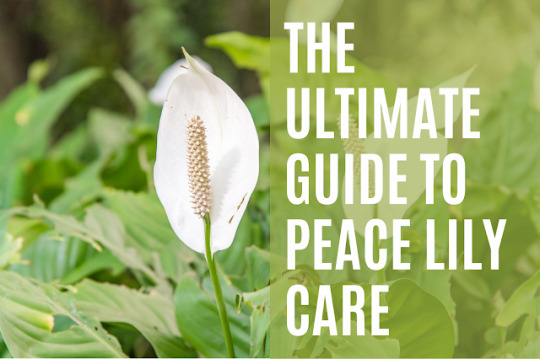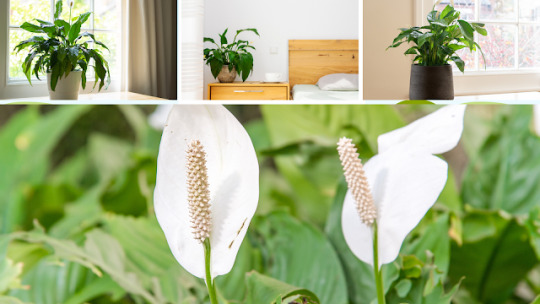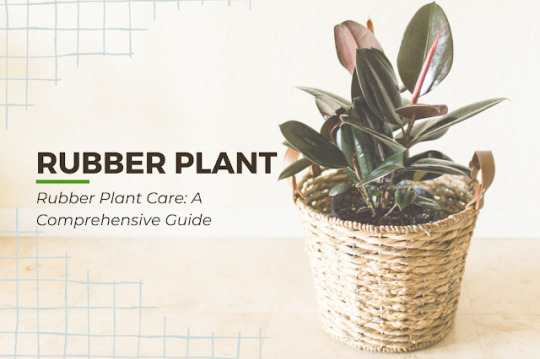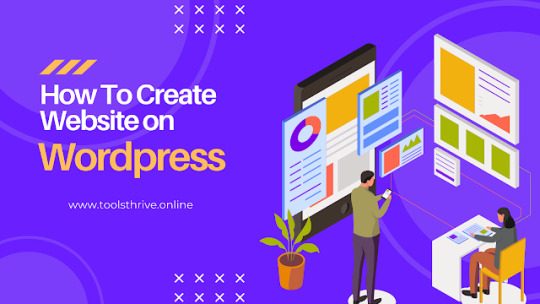ToolsThrive" Is a dynamic blog website that is dedicated to providing valuable insights and information on a wide range of tools and resources that can help individuals and businesses thrive in today's fast-paced world. With a focus on productivity, efficiency, and innovation, "ToolsThrive" covers topics ranging from software and apps, https://toolsthrive.online/
Don't wanna be here? Send us removal request.
Text
The Ultimate Guide to Peace Lily Care

The Ultimate Guide to Peace Lily Care
Peace Lily, scientifically known as Spathiphyllum, is a popular indoor plant cherished for its elegant appearance and air-purifying abilities. If you're looking to add a touch of natural beauty and tranquility to your home or office space, the Peace Lily is an excellent choice. This comprehensive guide will equip you with all the knowledge and tips you need to care for your Peace Lily and help it thrive in any environment.
Understanding the Peace Lily Plant

What is a Peace Lily? The Peace Lily is a tropical perennial plant native to the rainforests of Central and South America. It is distinguished by its dark green, glossy leaves, and beautiful white flowers that resemble a delicate, white flag of peace. The plant has a calming aura and is often considered a symbol of harmony and purity. Peace Lily Varieties There are several popular varieties of Peace Lily, each with its unique characteristics. Some of the common varieties include Spathiphyllum wallisii, Spathiphyllum Mauna Loa, and Spathiphyllum sensation. The Symbolism of Peace Lily The Peace Lily has a rich history of symbolism, associated with peace, prosperity, and hope. In various cultures, it is used in religious ceremonies and is considered a symbol of sympathy and good fortune.
Indoor Peace Lily Care
Light Requirements Peace Lilies prefer bright, indirect light. Placing them near a north-facing window or a few feet away from a sunny window with a sheer curtain is ideal. Watering Needs Proper watering is crucial for the health of your Peace Lily. It is best to water the plant when the top inch of the soil feels dry to the touch. Temperature and Humidity Peace Lilies thrive in warm, humid conditions. Maintain a temperature range between 65°F to 85°F (18°C to 29°C) and consider using a humidifier in dry environments. Choosing the Right Potting Mix A well-draining potting mix that retains some moisture is best for Peace Lilies. A mix of peat moss, perlite, and pine bark works well. Repotting Peace Lily As Peace Lilies grow, they may outgrow their pots. Repot the plant every year or two to provide ample space for the roots to grow.
Nurturing the Peace Lily
Pruning and Trimming Regular pruning helps maintain the shape and appearance of the Peace Lily. Remove yellow or brown leaves and faded flowers to encourage new growth. Fertilizing Tips Feed your Peace Lily with a balanced, water-soluble fertilizer during the growing season, typically from spring to early autumn. Dealing with Pests and Diseases Keep an eye out for common pests like spider mites and aphids. If infested, treat your plant with insecticidal soap or neem oil.
Troubleshooting Common Issues
Yellow Leaves Yellow leaves in Peace Lilies may indicate overwatering, underwatering, or exposure to direct sunlight. Adjust watering and lighting accordingly. Brown Tips Brown tips on the leaves can result from low humidity or over-fertilization. Increase humidity and reduce the frequency of fertilization. Wilting Wilting is usually a sign of underwatering. Check the soil moisture and water the plant if it feels dry. Drooping Flowers Drooping flowers are a natural part of the Peace Lily's lifecycle. Remove them once they start to fade to encourage new blooms.
Propagating Peace Lily
Division Method Propagate Peace Lily by dividing mature plants during repotting. Ensure each division has healthy roots and leaves. Growing Peace Lily from Seeds Growing Peace Lily from seeds is a time-consuming process. Collect seeds from mature plants and sow them in a suitable potting mix.
Peace Lily Decoration and Placement
Styling with Peace Lily Peace Lilies complement various interior styles. They can add a touch of elegance to modern, traditional, or minimalistic decor. Best Places to Display Peace Lily Place your Peace Lily in areas with indirect light, such as living rooms, bedrooms, or offices. Avoid placing them in direct sunlight.
Feng Shui and Peace Lily
How Peace Lily Brings Harmony In Feng Shui, Peace Lilies are believed to bring positive energy and promote harmony and balance in the surroundings. Dos and Don'ts Follow Feng Shui guidelines when placing Peace Lilies in your home or office to maximize their beneficial effects.
Benefits of Peace Lily
Air Purification Peace Lilies are exceptional air purifiers, removing harmful toxins like formaldehyde and benzene from the air. Health Benefits Indoor plants like Peace Lilies can improve air quality, reduce stress, and promote a sense of well-being.
Toxicity and Safety Concerns
Toxic Substances in Peace Lily Peace Lilies contain calcium oxalate crystals, which can be toxic if ingested. Keep the plant away from curious pets and young children. Keeping Peace Lily Away from Pets and Children Display Peace Lilies out of reach or opt for pet-safe plants if you have pets or small children at home.
Peace Lily in Different Seasons
Caring for Peace Lily in Summer During summer, increase watering and maintain humidity levels to keep your Peace Lily healthy. Peace Lily in Winter Reduce watering during winter and protect the plant from cold drafts to prevent damage.
Conclusion
Peace Lily, with its timeless elegance and numerous benefits, is an excellent addition to any living space. By following the guidelines provided in this comprehensive guide, you can ensure that your Peace Lily thrives and remains a symbol of peace and serenity in your home. Embrace the soothing presence of this beautiful plant and enjoy the numerous physical and mental health benefits it offers.
Frequently Asked Questions (FAQs)
- Can Peace Lilies survive in low-light conditions? - Peace Lilies can tolerate low light conditions but thrive better in bright, indirect light. - How often should I water my Peace Lily? - Water your Peace Lily when the top inch of the soil feels dry to the touch. - What causes yellow leaves in Peace Lily? - Yellow leaves in Peace Lily can result from overwatering, underwatering, or excessive sunlight exposure. - Is Peace Lily safe for pets? - No, Peace Lilies are toxic to pets if ingested. Keep them away from your furry friends. - Can I keep Peace Lily in my bedroom? - Yes, Peace Lilies can be placed in bedrooms as they contribute to better air quality and a calming environment Read the full article
0 notes
Text
Green Elegance: Mastering the Art of Rubber Plant Care

Mastering the Art of Rubber Plant Care
Rubber plants (Ficus elastica) are popular houseplants known for their attractive glossy leaves and air-purifying qualities. These low-maintenance plants can add a touch of greenery and elegance to any indoor space. In this article, we will explore everything you need to know about rubber plant care, from choosing the right location to dealing with common issues.
1. Selecting the Perfect Rubber Plant

When selecting a rubber plant, it's essential to choose a healthy specimen. Look for vibrant, dark green leaves without any signs of discoloration or damage. Check the plant for pests and ensure it has a well-established root system. Opt for a younger plant if you are a beginner, as they are easier to care for.
2. Light Requirements
Rubber plants prefer bright, indirect light. Placing them near a north-facing window or several feet away from a sunny south-facing window works best. Avoid direct sunlight, as it can scorch the leaves. If your plant isn't getting enough light, it may become leggy, so consider using artificial grow lights.
3. Ideal Temperature and Humidity
Rubber plants thrive in temperatures between 65°F to 80°F (18°C to 27°C). They enjoy moderate to high humidity levels, so misting the leaves occasionally can mimic their native tropical environment. However, they can adapt to lower humidity levels as well.
4. Watering Routine
Proper watering is crucial for rubber plant care. Allow the top inch of the soil to dry before watering. Overwatering can lead to root rot, while underwatering can cause the leaves to droop. It's best to maintain a consistent watering schedule, usually once a week, but adjust based on the environment and plant's needs.
5. Soil and Potting
Well-draining soil is essential for rubber plants. Use a mix of peat, perlite, and potting soil to ensure proper drainage. Repot the plant every two years or when the roots outgrow the current container. Choose a slightly larger pot with drainage holes to prevent waterlogging.
6. Fertilizing
During the growing season (spring and summer), apply a balanced liquid fertilizer every two to four weeks. Avoid fertilizing during the dormant winter months. Too much fertilizer can harm the plant, so follow the manufacturer's instructions.
7. Pruning and Maintenance
Pruning is an essential part of rubber plant care. Regularly trim away any yellow or damaged leaves to promote new growth. You can also pinch off new growth tips to encourage bushier growth. Wipe the leaves with a damp cloth to remove dust and keep them clean.
8. Propagation Techniques
Rubber plants can be propagated through air layering or stem cuttings. Air layering involves rooting a section of the stem while it's still attached to the plant. Stem cuttings can be taken from a healthy rubber plant and rooted in water or soil.
9. Common Pests and Diseases
Keep an eye out for common pests like mealybugs, spider mites, and scale insects. Regularly inspect your plant for any signs of infestation, and treat them immediately with insecticidal soap or neem oil. Rubber plants are generally hardy, but overwatering can lead to root rot.
10. Troubleshooting Yellow Leaves
Yellow leaves on a rubber plant can be caused by various factors, including overwatering, underwatering, or inadequate light. Adjust your care routine and environmental conditions accordingly to resolve the issue.
11. Toxicity and Pet Safety
Rubber plants contain a milky sap that can be mildly toxic to pets and humans. Keep them out of reach of curious pets and children. If ingested, the sap may cause mild stomach upset, so it's best to take precautionary measures.
12. Decorating with Rubber Plants
With their attractive foliage, rubber plants make excellent decorative elements. They can be used as standalone floor plants or placed on shelves and tabletops. Mix and match different pot styles to complement your interior decor.
13. Reviving an Unhealthy Rubber Plant
If your rubber plant is showing signs of distress, such as drooping leaves or yellowing, it's essential to assess its care routine. Check for any issues with watering, light, or pests, and make the necessary adjustments to revive the plant.
14. Conclusion
In conclusion, rubber plant care is relatively easy, making them an excellent choice for both novice and experienced plant enthusiasts. By providing the right amount of light, water, and humidity, along with regular maintenance, your rubber plant will thrive and beautify your living space.
15. FAQs
1. How often should I water my rubber plant? Water your rubber plant once a week, allowing the top inch of soil to dry between waterings. 2. Can I keep a rubber plant in a low-light environment? Rubber plants prefer bright, indirect light, but they can adapt to lower light conditions as well. 3. Is the rubber plant safe for pets? The rubber plant contains mildly toxic sap, so it's best to keep it out of reach of pets. 4. Why are the leaves on my rubber plant turning yellow? Yellow leaves can be caused by overwatering, underwatering, or insufficient light. Adjust your care routine accordingly. 5. How do I propagate my rubber plant? You can propagate rubber plants through air layering or stem cuttings. Follow proper techniques for successful propagation. Read the full article
0 notes
Text
The Ultimate Guide to Installing Wordpress in Under 10 Mins!

If you are looking to start your own blog or website, WordPress is a great platform to use. It's easy to use, customizable, and has a large community of developers creating new plugins and themes to enhance the platform. In this guide, we will show you how to install WordPress in under 10 minutes.
Outline
- Introduction - What You Need Before Installing WordPress - How to Install WordPress on Your Web Host - Setting Up Your WordPress Site - Installing a WordPress Theme - Installing Plugins - Customizing Your WordPress Site - Security Measures for Your WordPress Site - Backing Up Your WordPress Site - Conclusion - FAQs
What You Need Before Installing WordPress
Before you start installing WordPress, you need to make sure you have the following: - A domain name - A web hosting account - A web browser Once you have these, you can proceed to install WordPress on your web host.
How to Install WordPress on Your Web Host
- Log in to your web hosting account and go to your control panel. - Look for the "WordPress" icon and click on it. - Click on the "Install" button. - Fill in the necessary information, such as your domain name and the directory you want to install WordPress in. - Click on "Install" and wait for the installation to finish. - Once the installation is complete, you will be given a username and password to log in to your new WordPress site.
Setting Up Your WordPress Site
After you have installed WordPress, you can start setting up your site by customizing the theme and adding plugins. Installing a WordPress Theme - Go to the "Appearance" tab on the left-hand side of your WordPress dashboard. - Click on "Themes". - Click on the "Add New" button. - Browse through the available themes or search for a specific one. - Click on "Install" and wait for the theme to be installed. - Once the theme is installed, click on "Activate" to make it the active theme on your site. Installing Plugins - Go to the "Plugins" tab on the left-hand side of your WordPress dashboard. - Click on "Add New". - Browse through the available plugins or search for a specific one. - Click on "Install" and wait for the plugin to be installed. - Once the plugin is installed, click on "Activate" to make it active on your site.
Customizing Your WordPress Site
You can customize your WordPress site in many ways, such as: - Changing the theme - Adding widgets to your site - Creating custom menus - Adding custom CSS To customize your site, go to the "Appearance" tab on the left-hand side of your WordPress dashboard and click on "Customize".
Security Measures for Your WordPress Site
WordPress is a popular platform, which makes it a target for hackers. To keep your site secure, you should take the following security measures: - Use strong passwords - Keep your WordPress software, themes, and plugins up to date - Use a security plugin - Limit login attempts - Backup your site regularly
Backing Up Your WordPress Site
Backing up your WordPress site is important in case something goes wrong. To back up your site, you can use a plugin or do it manually. Using a Plugin - Go to the "Plugins" tab on the left-hand side of your WordPress dashboard. - Click on "Add New". - Search for a backup plugin, such as "UpdraftPlus". - Install and activate. - Once the plugin is activated, go to "Settings" and configure the backup options. - Click on "Backup Now" to create a backup of your site. Doing it Manually - Log in to your web hosting account. - Go to the file manager or use an FTP client to access your site's files. - Select all the files and folders in your WordPress directory. - Download the files to your local computer.
Conclusion
In this guide, we have shown you how to install WordPress in under 10 minutes. We have also covered how to customize your site, install themes and plugins, and keep your site secure. By following these steps, you can easily set up your own WordPress site and start blogging or creating a website.
FAQs
- Do I need to know how to code to use WordPress? No, you don't need to know how to code to use WordPress. It's designed to be user-friendly and easy to use. - How much does it cost to install WordPress? WordPress itself is free, but you will need to pay for a domain name and web hosting. - Can I change my WordPress theme later on? Yes, you can change your WordPress theme at any time by going to the "Appearance" tab and selecting a new theme. - How often should I back up my WordPress site? It's recommended to back up your WordPress site at least once a week. - Can I use WordPress for an e-commerce site? Yes, you can use WordPress for an e-commerce site by using a plugin such as WooCommerce. Read the full article
#webhosting#websitebackup#websitecreation#websitecustomization#websitedesign#websiteplugins#websitesecurity#websitethemes#wordpress
0 notes
Text
A Comprehensive Guide on How to Start a Successful Blog in 2023

Blogging has become a popular way for individuals and businesses to share their ideas, promote their products, and generate revenue. If you're thinking about starting a blog in 2023, this guide will provide you with everything you need to know to start a successful blog, from choosing a niche to monetization strategies.
1. Choose a Blog Niche
The first step in starting a successful blog is choosing a niche. A niche is a specific topic that your blog will focus on. It's essential to choose a niche that you're passionate about and that has a market demand. Research your potential niche and see if there's a significant audience interested in that topic.
2. Content Creation
Content is the backbone of any blog. You need to create engaging and informative content that will keep your readers interested. Create a content calendar and plan out your posts in advance. Consistency is key to building a loyal readership.
3. Blog Design
Your blog's design is critical in creating a positive user experience. Ensure that your blog is easy to navigate and has a visually appealing layout. Use high-quality images and videos to enhance your content.
4. Web Hosting and Domain Name
To start a blog, you need a web host and a domain name. A web host is a service that stores your website files and makes them accessible to visitors. A domain name is your website's address. Choose a reliable web hosting service and a domain name that's easy to remember and reflects your blog's niche.
5. Blogging Platform
Choose a blogging platform that suits your needs. WordPress is the most popular blogging platform, and it's user-friendly and customizable. However, there are other options, such as Squarespace and Wix.
6. SEO
Search engine optimization (SEO) is the process of optimizing your blog's content to rank higher in search engine results pages (SERPs). Use relevant keywords in your blog posts, and ensure that your content is optimized for mobile devices.
7. Social Media Promotion
Promote your blog on social media platforms, such as Facebook, Twitter, and Instagram. Use social media to engage with your readers and build a community around your blog.
8. Email Marketing
Email marketing is a powerful tool for building a loyal readership. Use an email marketing service, such as Mailchimp or Constant Contact, to send newsletters to your subscribers.
9. Monetization
There are various ways to monetize your blog, such as affiliate marketing, sponsored posts, and advertising. Choose a monetization strategy that suits your niche and audience.
10. Analytics and Blogging Tools
Use analytics tools, such as Google Analytics, to track your blog's performance. Use blogging tools, such as Grammarly and Canva, to improve your writing skills and enhance your content.
11. Blogging Community and Guest Blogging
Engage with the blogging community by commenting on other blogs and participating in blogging forums. Guest blogging is a great way to reach a new audience and build relationships with other bloggers.
12. Branding and Blog Promotion
Develop a strong brand identity and promote your blog through various channels, such as social media and email marketing. Create a logo and tagline that reflect your blog's niche and message. In conclusion, starting a successful blog requires dedication and hard work. Follow these steps and strategies, and you'll be on your way to creating a blog that stands out in 2023. Happy blogging! Read the full article
0 notes
Text
A Comprehensive Guide on How to Start a Successful Blog in 2023

Blogging has become a popular way for individuals and businesses to share their ideas, promote their products, and generate revenue. If you're thinking about starting a blog in 2023, this guide will provide you with everything you need to know to start a successful blog, from choosing a niche to monetization strategies.
1. Choose a Blog Niche
The first step in starting a successful blog is choosing a niche. A niche is a specific topic that your blog will focus on. It's essential to choose a niche that you're passionate about and that has a market demand. Research your potential niche and see if there's a significant audience interested in that topic.
2. Content Creation
Content is the backbone of any blog. You need to create engaging and informative content that will keep your readers interested. Create a content calendar and plan out your posts in advance. Consistency is key to building a loyal readership.
3. Blog Design
Your blog's design is critical in creating a positive user experience. Ensure that your blog is easy to navigate and has a visually appealing layout. Use high-quality images and videos to enhance your content.
4. Web Hosting and Domain Name
To start a blog, you need a web host and a domain name. A web host is a service that stores your website files and makes them accessible to visitors. A domain name is your website's address. Choose a reliable web hosting service and a domain name that's easy to remember and reflects your blog's niche.
5. Blogging Platform
Choose a blogging platform that suits your needs. WordPress is the most popular blogging platform, and it's user-friendly and customizable. However, there are other options, such as Squarespace and Wix.
6. SEO
Search engine optimization (SEO) is the process of optimizing your blog's content to rank higher in search engine results pages (SERPs). Use relevant keywords in your blog posts, and ensure that your content is optimized for mobile devices.
7. Social Media Promotion
Promote your blog on social media platforms, such as Facebook, Twitter, and Instagram. Use social media to engage with your readers and build a community around your blog.
8. Email Marketing
Email marketing is a powerful tool for building a loyal readership. Use an email marketing service, such as Mailchimp or Constant Contact, to send newsletters to your subscribers.
9. Monetization
There are various ways to monetize your blog, such as affiliate marketing, sponsored posts, and advertising. Choose a monetization strategy that suits your niche and audience.
10. Analytics and Blogging Tools
Use analytics tools, such as Google Analytics, to track your blog's performance. Use blogging tools, such as Grammarly and Canva, to improve your writing skills and enhance your content.
11. Blogging Community and Guest Blogging
Engage with the blogging community by commenting on other blogs and participating in blogging forums. Guest blogging is a great way to reach a new audience and build relationships with other bloggers.
12. Branding and Blog Promotion
Develop a strong brand identity and promote your blog through various channels, such as social media and email marketing. Create a logo and tagline that reflect your blog's niche and message. In conclusion, starting a successful blog requires dedication and hard work. Follow these steps and strategies, and you'll be on your way to creating a blog that stands out in 2023. Happy blogging! Read the full article
0 notes
Text
0 notes
Text
0 notes
Text

#how to make money online#how to earn money online#make money online#earn money online#best way to make money online#how to make money#earn money online without investment#how to earn money online without investment#how to make money with affiliate marketing#websites to make money#how to earn money online for students#make money online 2023#ways to make money online#how to earn online#free ways to make money#how to make money online without investment
1 note
·
View note